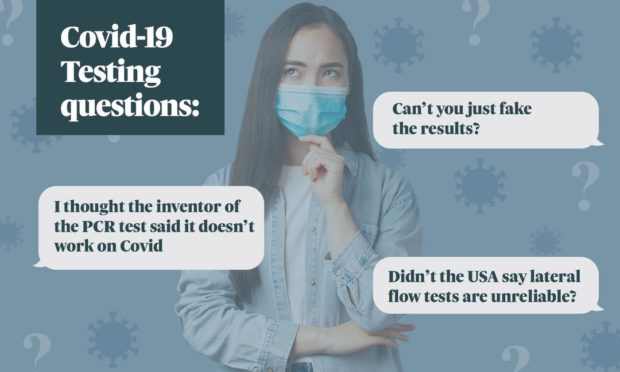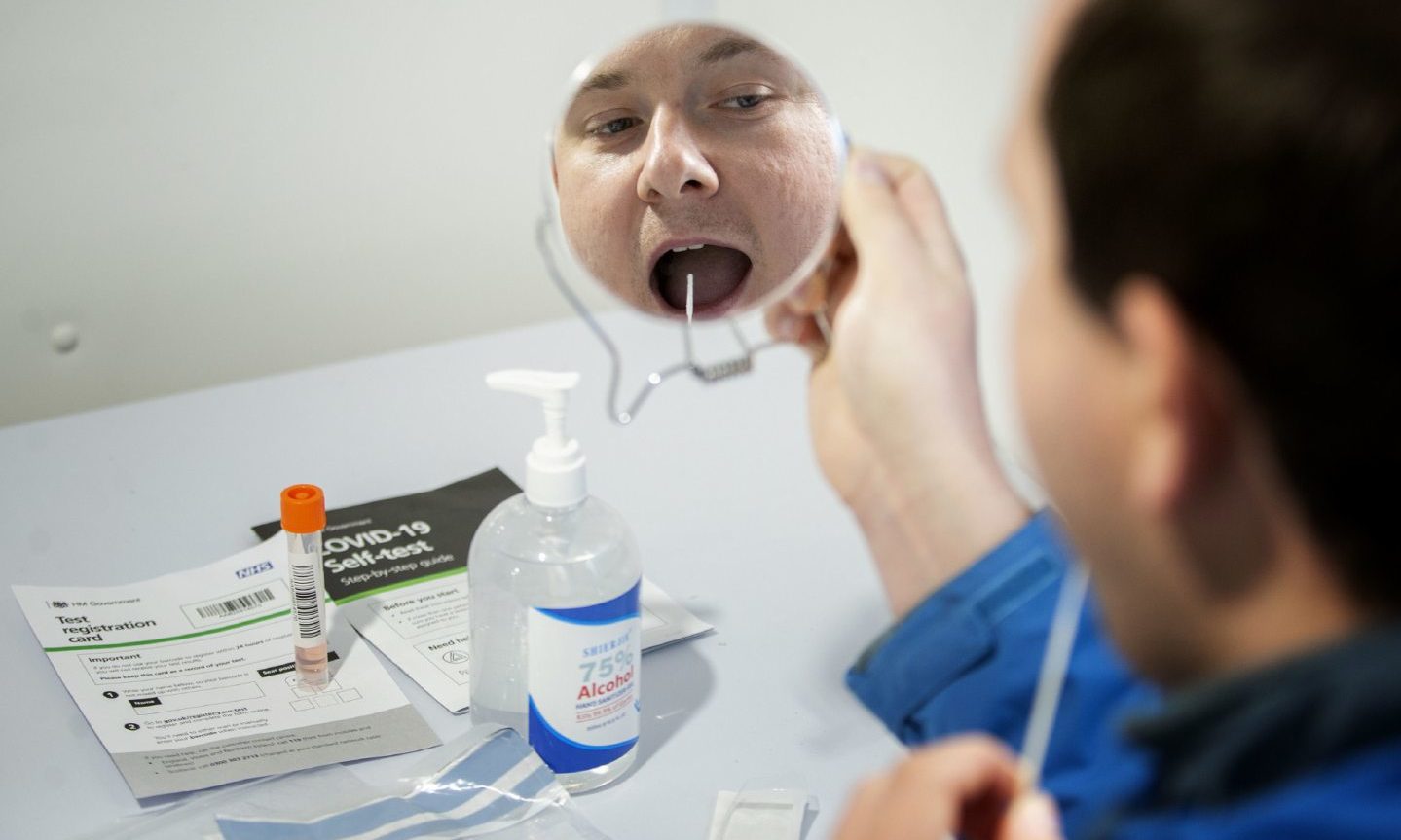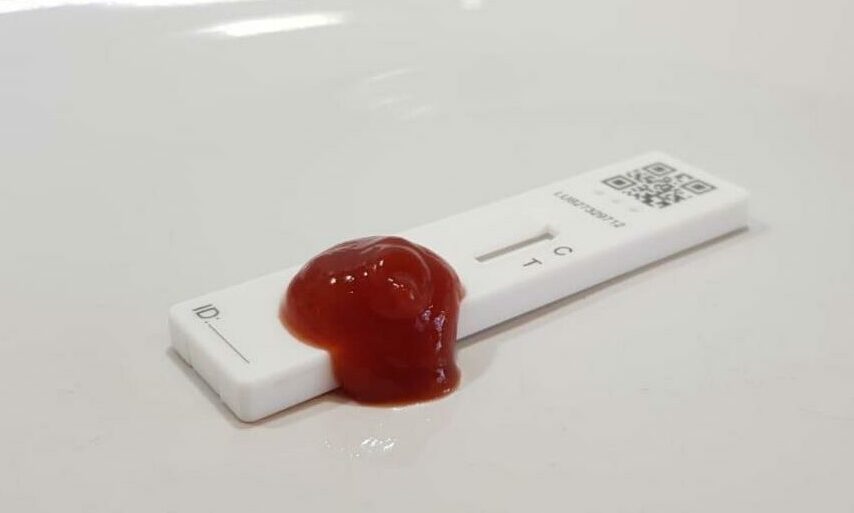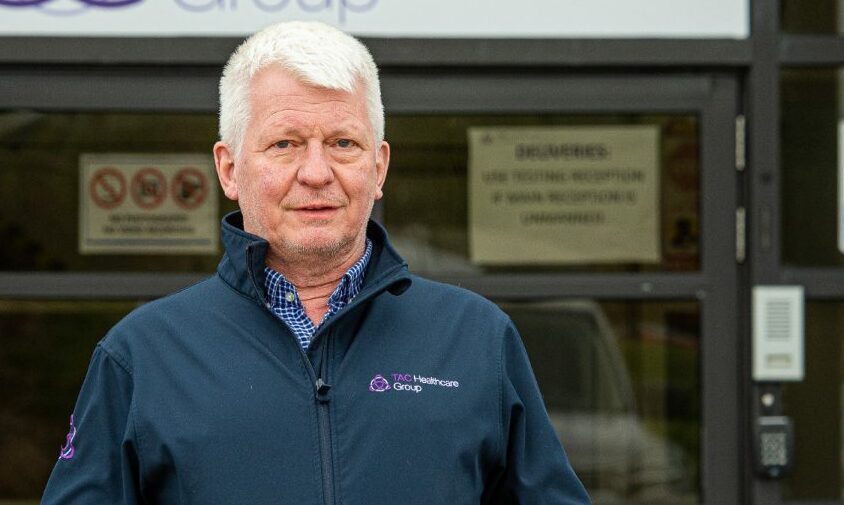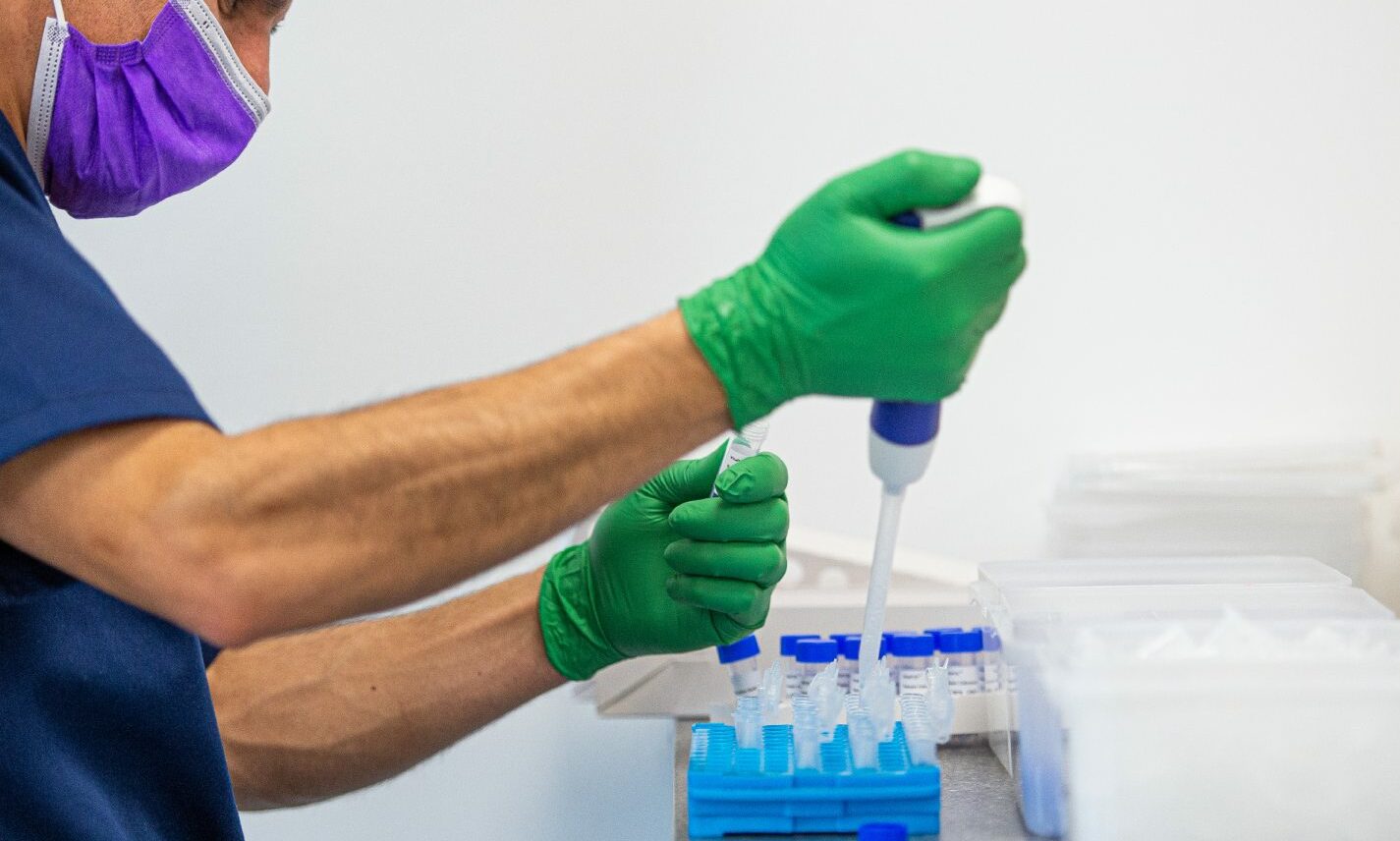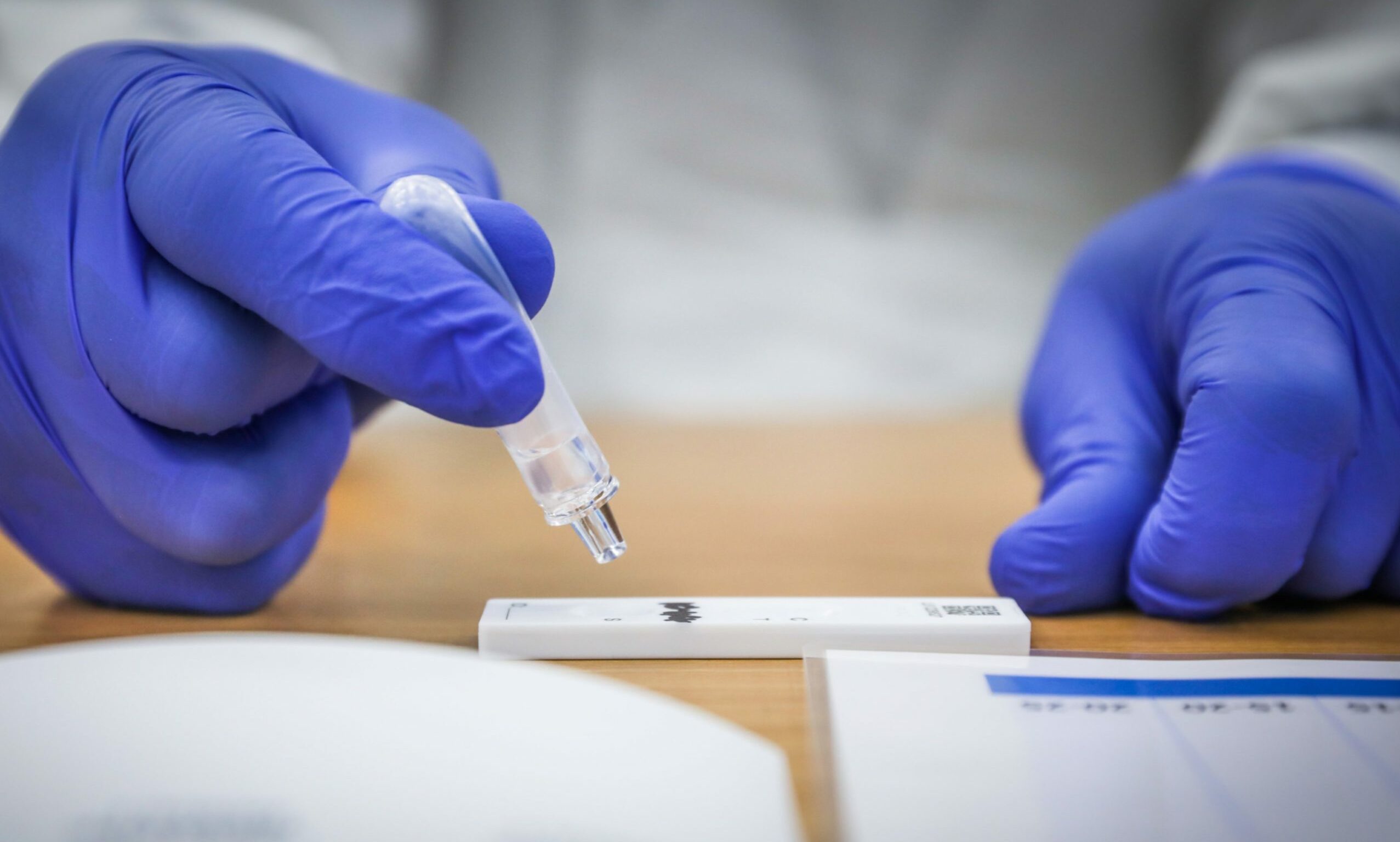Do Covid tests only work if you have symptoms of the virus – and are the results reliable? We answer your questions on PCR and lateral flow testing.
It is hard to avoid conversation and comments about coronavirus online – with many people sharing their takes and opinions on the topic.
We’ve gone to the experts to put minds at ease and answer some of your questions.
Q: “Do Covid tests only work if you’re showing symptoms?”
Concerns about asymptomatic Covid have emerged following widely-circulated claims by Dr Mike Yeadon, a former vice-president of Pfizer.
He was filmed giving a speech and saying: “If you’re full of virus, you’ll have symptoms – no exceptions.”
This has been widely debunked, however, and around one in three people with Covid are not thought to show symptoms.
While studies have shown some types of lateral flow devices are less accurate than others, they can still detect Covid in asymptomatic people in a majority of cases.
The same also applies to “gold standard” PCR tests for Covid.
Everyone in Scotland has access to rapid lateral flow kits via post or to pick up at the likes of local pharmacies.
The Scottish Government said this will identify cases that could go otherwise missed.
And last week Chris Littlejohn, the deputy director of public health at NHS Grampian, said it can identify the boundaries of outbreaks and areas which need more resources.
Q: “Are lateral flow tests reliable if people can fake the results?”
In May, NHS Grampian was forced to speak out after stories of people “tricking” Covid tests began circulating on social media.
People found that pouring fizzy drinks or ketchup on lateral flow devices was enough to trigger a seemingly positive result.
However, these items do not contain coronavirus particles and, instead, were completely breaking the tests when used.
As a result, what appeared to show a Covid-positive outcome was simply a result of the device being broken.
A health board spokesman said any results of this kind would not show up in any daily case figures.
“A positive lateral flow device test is always followed up with a PCR test to confirm the result,” he added.
“This is the gold standard of testing. 90% of the positive LFD tests in Moray have been confirmed as positive by PCR testing.”
Q: “How do PCR tests for Covid work?”
The PCR process is typically able to tell a patient if they are Covid-positive within about half an hour, but many take longer as they have to be sent to specialist labs.
It has been likened to finding a needle (Covid) in a haystack (sample) – only this test finds one needle, then produces thousands more until they become visible among the mass of hay.
To start with, samples of mucus are taken from the top of the person’s nose and the back of their throat. This collects RNA – which is similar to DNA – from the person, and RNA from any coronavirus.
The swab is inserted into a vial of “buffer” fluid, which instantly kills any virus particles it may contain.
After being transported to a lab, technicians mix the sample with specific enzymes to convert its RNA into DNA, then add tiny “probes” which attach themselves to traces of Covid.
The sample is then heated and cooled repeatedly, with each cycle causing the DNA to double in volume.
This continues until it has produced enough Covid DNA to be read by a machine – prompting a positive result.
Ken Park, clinical director of TAC Healthcare, told us: “The PCR test is the gold standard and it’s like the sort of thing you see in crime investigations.
“They can detect a microscopic bit of the virus – like when the crime scene guys pick up a hair and say ‘this must be connected to so-and-so’.
“The saliva swab can detect the smallest amount of Covid-19.”
Q: “Did the inventor of the PCR test say it can’t detect Covid-19?”
PCR tests were invented by American biochemist Kary Mullis in 1985, and he was later awarded the Nobel Prize in Chemistry for his work.
He died in 2019, before the Covid-19 outbreak.
Several online reports have quoted lines from a New York Native article in 1996 about Dr Mullis, in which he is reported saying “quantitative PCR is an oxymoron”.
Some have taken the use of “oxymoron” to suggest he was claiming this type of testing does not work.
However, he was referring to the fact that the amount of virus cannot be detected in this way – only whether or not it is present.
Returning to the needle in a haystack analogy, the test is only able to give a yes/no answer to if a needle is present – and not how many needles there may be.
Q: “Did the US government say lateral flow tests are too unreliable?”
In June the US Food And Drug Administration (FDA) refused to approve Innova’s lateral flow devices for distribution.
It revealed “significant concerns” about the performance of the tests, and said they should be destroyed or returned to the manufacturer.
These same devices have formed the “cornerstone” of the UK’s testing strategy, and millions have been made available for free.
But the FDA said the risks of both false negative and false positive results are too high.
In a major study in March, the Cochrane Library found the Innova lateral flow tests are able to detect Covid in 72% of people with symptoms, but only 58% for those who are asymptomatic.
This is below the standard set by devices from other manufacturers.
In the UK, rigorous tests at the Porton Down/ Oxford University lab showed the Innova tests were, on average, 79% accurate when used by lab scientists.
This fell to 73% when administered by healthcare workers and 58% when people took the sample themselves.
While the US FDA did say the Innova lateral flow devices are not fit for purpose, it did not say the method overall is flawed.
The UK Government says the tests are still useful and can help to “break the chains of transmission”, while the British Medical Association has called for their continued use, but “with caution”.
Q: “Is a Covid test meant to hurt?”
Helen Corrigan, health protection nurse specialist at NHS Grampian, said: “Both rapid testing with a Lateral Flow Device (when you don’t have symptoms) and PCR testing (when you do have symptoms) require taking swabs from the back of the throat and inside the nose.
“This can be a little uncomfortable – and swabbing the throat may make you gag slightly – but they should not cause excessive pain.
“Any discomfort should ease as soon as swabbing is complete.
“Advice on how to carry these tests out at home – including instructional videos – is available on the testing pages of NHS Inform.”
More questions answered
- ‘Are cases only rising because we’re testing more?’ and 5 other Covid questions answered
- What happens when mum thinks Covid is a myth? Charity launches guide to combating conspiracies
- What’s in my Covid jab: Everything you need to know about the vaccine ingredients
- Face masks: As Sturgeon says they are here to stay, an NHS boss explains why you should keep wearing one
